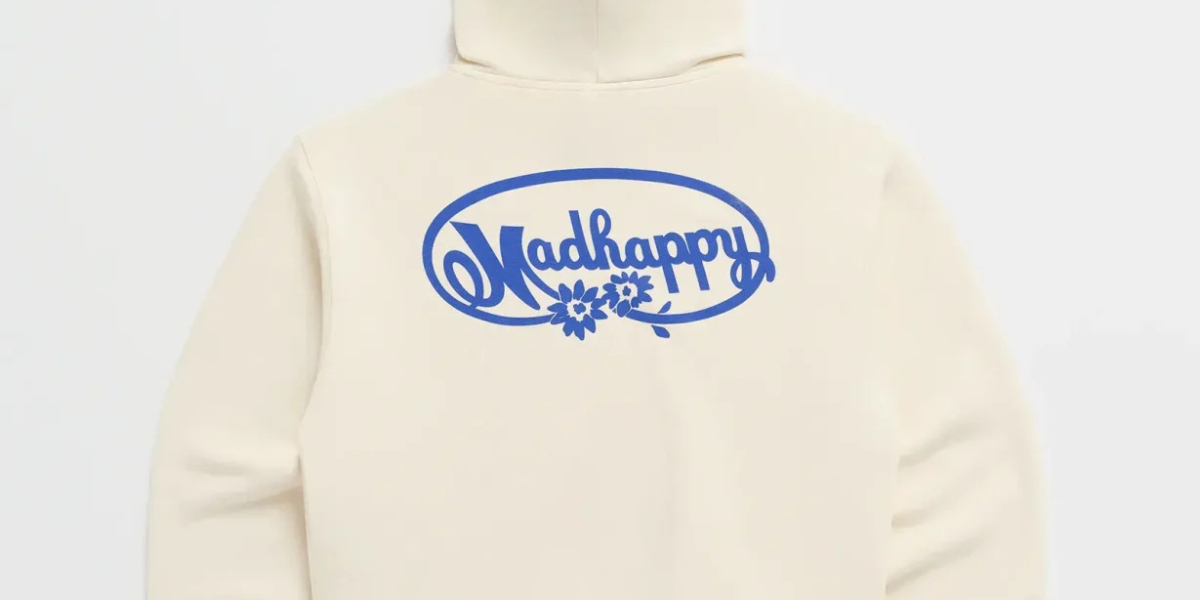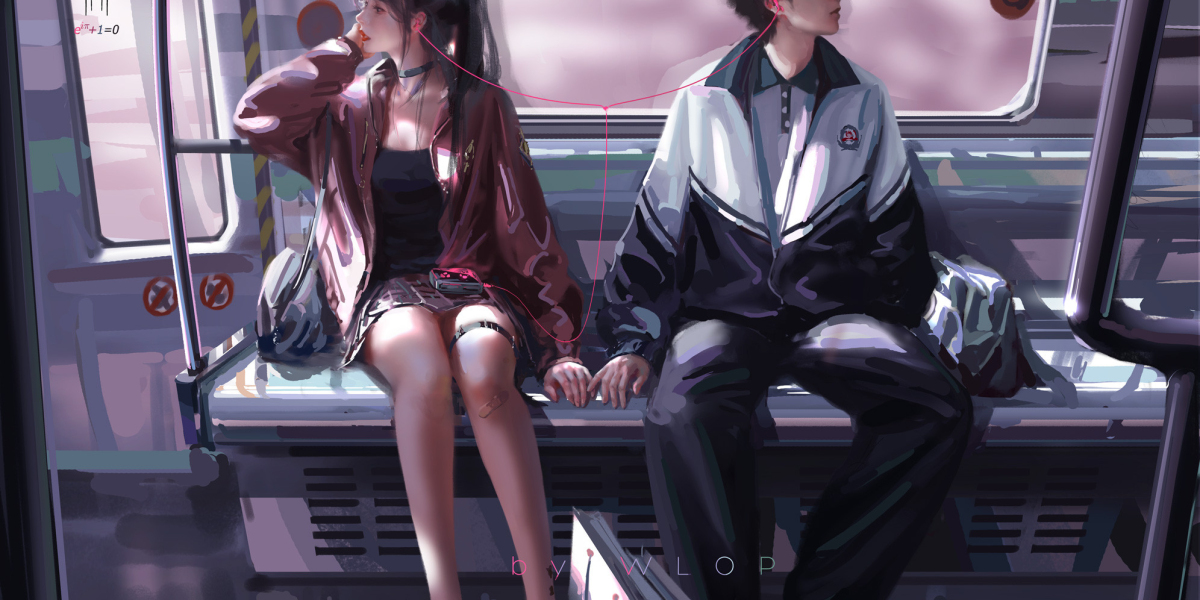Madhappy story isn’t just another startup saga—it’s a deeply personal exploration of joy, identity, and collective uplift. Founded in 2017 by brothers Jonah and Zachary Levine, along with high school friend Brian Mazza, its spark came from seeking meaning beyond the typical streetwear hustle. The trio came together with a shared vision: to craft a brand rooted in real human emotions, weaving mental wellness into fabric—literally. Their name, a nod to the philosophy that happiness coexists with madness, encapsulates the nuanced human experience: our highs are shaped by our lows; our light emerges from darkness.
From day one, Madhappy set itself apart by rejecting the superficiality of trend-chasing. Yes, clothing is visual and can look cool—but in their perspective, purpose is cool, too. With each tee and hoodie, they sewn in empathy, mental health awareness, and transparent conversations. In a fashion landscape often detached from soul, Madhappy purposely inserted heart.
Mission Meets Movement: A Mental Health Revolution
Madhappy isn’t just selling clothes—they’re igniting a movement about mental well-being. Their mission statement reads like a manifesto: “We exist to spread joy, elevate mental wellness, and spark community.” This isn’t corporate fluff. Every season, every campaign, every design centers around a mental health theme—joy, introspection, hope, connection.
They partner with mental health organizations like To Write Love On Her Arms and Active Minds, and donate a percentage of proceeds. But more importantly, they fund actual programs and workshops—whether it’s talks with clinicians in their stores or free counseling sessions via pop-ups. The real value lies in human connection: planting seeds of conversation where silence too often prevails.
There’s something particularly powerful in how Madhappy merges streetwear with mental health culture. Younger generations—Gen Z especially—are exploding the mental health conversation, combating stigma, advocating vulnerability. Madhappy doesn’t just ride that wave; they empower it. They invite us to wear our stories openly, to curate conversation, to offer hopeful contradictions.
Designing with Depth: Aesthetic Meets Intention
In a world of fast fashion and superficial trends, Madhappy’s design ethos is rooted in thoughtful storytelling. Their garments are visually bold—bright colors, expressive graphics—but never gratuitous. Every line, every thread, every motif has meaning.
Take the signature elephant logo, for instance. It’s simple, impactful, and heavy with symbolism. The elephant—a symbol of introspection, strength, memory—embodies the brand’s central message: staying emotionally strong and introspective in a chaotic world. “What if the strongest among us aren’t afraid to feel?” that logo seems to ask. Or look at their vibrant color palette: sunshine-yellow uplifting, sky-blue contemplative. The colors are curated not just to catch eyes, but to spark emotional resonance.
Madhappy’s capsule collections are even more proof of their poetic design language. “Find Myself There” layers evocative photography onto tees, while their “Open Ear” line uses embroidered designs to echo active listening metaphors. These aren’t surface-level aesthetics—they’re visual metaphors. When you pull on one of their sweatshirts, you’re wearing more than fabric—you’re inviting purposeful reflection, mutual empathy, and communal uplift.
Community as Culture: Spaces That Spark Connection
Madhappy has skillfully crafted a sense of belonging. Their flagship stores—like those in Los Angeles, New York, London, and Milan—are more than retail spaces. These are living spaces where mental-health-first programming thrives. Think: free therapy sessions, panel discussions, journaling workshops, meditation hours, even floral-arranging nights. There’s also a curated café in some stores; you can order a turmeric latte or cold-brew while scrolling their “notes of encouragement” wall.
Digital-space echoes the same commitment. Their social feeds aren’t just product showcases—they feature candid conversations with mental health professionals, creative artists sharing coping techniques, and even user-submitted stories. They intentionally spotlight individuals across age, race, gender, culture—reflecting joy as universal and accessible. Their #MadhappyMentality hashtag encapsulates this: it’s a philosophy, a call-to-action, a digital community.
This sense of belonging is crucial in combating modern isolation. For the seeker who feels alone, Madhappy offers tangible—and emotional—spaces where vulnerability is normalized, where one doesn’t have to fake a smile under 10-layer filters.
Strategic Collaborations: When Brands Think Bigger
Madhappy Tracksuit has partnered screen-first: away from opportunistic collabs and more toward soul-synced alliances. Collaborations range from artists to charitable orgs to designers—but always rooted in joint narrative.
A highlight: their partnership with LA-based artist David Choe, whose visceral art style brought raw emotionality to a capsule collection. Paint strokes across tees—messy, intuitive—mirrored the chaos behind emotional breakthroughs. A portion of proceeds supported youth mental health initiatives in underserved communities.
Another key move: collaborating with indie mental-health podcast hosts, touring cities with “Madhappy Talks.” These events feature guest speakers, audience Q&A, interactive art booths—and of course limited releases. Each collab is less homage, more alignment: they elevate Madhappy’s core while amplifying the collaborator’s message.
Ethical Apparel: Building a Sustainable Ecosystem
In conversations about transparency and sustainability, Madhappy could have stayed quiet—but they chose to speak loudly. They source organic cotton certified by OEKO-TEX, shifting away from chemical-laden mills. They print using low-impact dyes, and have begun exploring recycled polyester blends. Even their packaging is curated: compostable mailers, instructions to reuse tote bags, a digital thank-you note tucked inside.
Yes, these steps aren’t unique. What sets them apart is the storytelling: every sustainability move is contextualized in their mission. They sell sweatshirts that gently remind, “Take care of yourself, and the planet will take care of you.” For the consumer who absorbs meaning, every purchase leaves a positive ripple across mental health systems and environmental threads.
Even their returns policy encourages mindful consumption: a quarter of returns are donated to shelters or upcycled, rather than tossed. They create a loop of intention—to buy less, but better; to value the garment, its maker, and the bigger story woven into it.
Social Movement Through Media: Storytelling That Hits Home
Beyond clothes and events, Madhappy has mastered narrative creation. Their video campaigns are cinematic, human-first, sometimes achingly candid. “Meditate With Me” invites viewers into a dimly lit studio session where host meditates, pauses, reflects—and invites you to breathe, too. It’s not selling gear; it’s sharing space.
Their Instagram originals—like mini-documentary series on real peoples’ healing journeys—don’t beat around the bush. They venture into PTSD, grief, burnout, LGBTQ+ self-acceptance. But the lens is never voyeuristic; it’s compassionate. The tone is respectful, the editing slow, conversational: as if you’re sitting with a friend holding space.
More recently, they launched a podcast titled “Joy Is…” hosted by Sarah Charles Lewis. Each episode features guests—from designers to athletes to mental health professionals—describing what joy means to them, how they cultivate it despite struggle. The podcast has no flashy production, no hype, just curiosity and authenticity. And that simplicity echoes Madhappy’s core: happiness isn’t a destination—it’s a practice shared between messy humans.
Economics of Empathy: The Business Model That Pivots Toward People
Madhappy’s success isn’t luck—it’s a conscious choice to blend profitability and purpose. Their revenue model includes direct sales, wholesale partnerships (e.g. select uptown boutiques, indie bookshops), and experiential pop-ups like the roaming “All Souls’ Café.” They occasionally release limited-edition charity drops—prices elevated, proceeds 100% donated. But they don’t overuse scarcity for hype; instead, they temper each release with storytelling about the cause and how the funds will help.
By integrating mental health practitioners into pricing strategies—e.g. sliding-scale access for certain community events—they mitigate elitism. No paying double to get access to wellness content. They recognize that stigma and cost are twin barriers; by your mission statement, emotional support shouldn’t depend on fancy price tags.
It’s a subtle but brilliant business model: tie profit to mission without commodifying either. Their investors—ethical who want social return dividends—are aligned with this vision, reinforcing that this 21st-century brand can scale by nurturing humans, not tricking them.
Cultural Ripple Effects: Madhappy in the Zeitgeist
The bigger story here isn’t about a brand selling hoodies—it’s about conversation, culture, and emotional freedom. Madhappy has jumped into classrooms, youth centers, rehab facilities, and online forums—not to promote clothes, but shared vulnerability. In mental health research, “normalization” of conversation is a huge step towards destigmatization. Madhappy calls this “bringing therapy into your wardrobe”—and it’s working.
Social media creators now openly cite Madhappy’s “permission to feel” framework in mental-health storytelling. Educators curate their design campaigns as templates for art therapy. Other streetwear brands consider pivoting from hype cycles toward narrative intentionality. It’s become academically cited, culturally referenced and occasionally emulated—and that’s not without irony. A brand choosing not to chase hype becomes suddenly hip because of its hormetic authenticity.
This ripple extends into media. Several cite Madhappy as key players shifting fashion toward “social impact design.” In podcasts, creative roundtables, YouTube features, they earn praise for an emotional edge that transcends mere commerce.
Incoming Challenges: Growth Without Losing Ground
But growth brings friction. Scaling globally while retaining vulnerability is a tightrope. Some critics say the brand’s pastel look and white-elephant aesthetics feel too middle-class or homogeneous—missing deeper demographic diversity. Madhappy addresses this by launching multi-lingual content, featuring non-Western creatives in key markets (Seoul, Sao Paulo, Lagos). The emotional language may be universal; aesthetics must adapt to local emotional expression.
Another challenge: when mental-health messaging becomes a marketing ploy. Madhappy risks being accused of “trauma tropes” or virtue-signaling. That’s why they never drop mental-health messaging alone—they always attach real resources, actions, donations. Their community councils include mental-health professionals who audit campaigns before release: reviewing tone, imagery, and impact. They double down on ethical communication.
It’s almost postmodern: a brand teaching emotional intelligence, while personally evolving emotionally intelligent structures. The narrative is messy, self-reflective, layered—true to human complexity.
A Personal Reflection: Why Madhappy Matters
As a consumer, observer, and sometimes hopeful cynic, I felt a chill the first time I stepped into a Madhappy store. It was too open, too calm, too un-forced. A barista quietly dropped a note on the counter: “Take this if you need it,” with a stack of local helpline cards. It wasn’t a marketing tactic—it was deeply grounded presence.
In a world drowning in dopamine loops, polished narratives, and ad-driven content, Madhappy gifted me a moment of stillness. When I wore one of their tees, I didn’t feel like a billboard—I felt like a bridge. The bridge between my interior world and the stranger walking beside me. That whisper of possibility—that I might say “I’m having a hard day” rather than “I’m good”—is the quiet revolution they’re cultivating.
That’s why this brand isn't just sartorial—it’s soulful.
Looking Ahead: The Future of Fairy-Tale Pragmatism
As Madhappy Hoodie matures into a cultural institution, the key questions are: can they maintain authenticity at scale? How do they translate kindness across continents? Where’s the line between being fashion-forward and being emotionally resonant?
If they succeed, we may see an industry-wide shift. Imagine major brands embedding mental-health funding in profit models. Imagine fashion stores that double as healing spaces. Imagine collections launched on the World Mental Health Day. Madhappy’s potential ripple? Enormous.
But more personally, I imagine a wardrobe of hope. Clothing that reminds you to take care, to feel deeply, to pause. That’s the promise they hold: not just a hood on your shoulders, but a hug to your heart.
Final Thoughts: Wear Joy, Spread Joy
What makes Madhappy truly unique is its relentless consistency. From day one to today, the brand has stayed anchored in one question: What if fashion changed hearts before changing trends? In our era of emotional exhaustion and digital fatigue, this question is radical. And their answer? Joyful, mindful, messy, hopeful clothing—something I didn’t know I needed.
If you’re reading this and you buy one of their sweatshirts, realize you’re not just wearing fabric—you’re becoming part of a collective narrative: that it’s okay to not be okay, it’s okay to seek connection, and it’s okay to own your emotions. That patch of cotton on your back can carry more than warmth—it can carry permission to feel.








